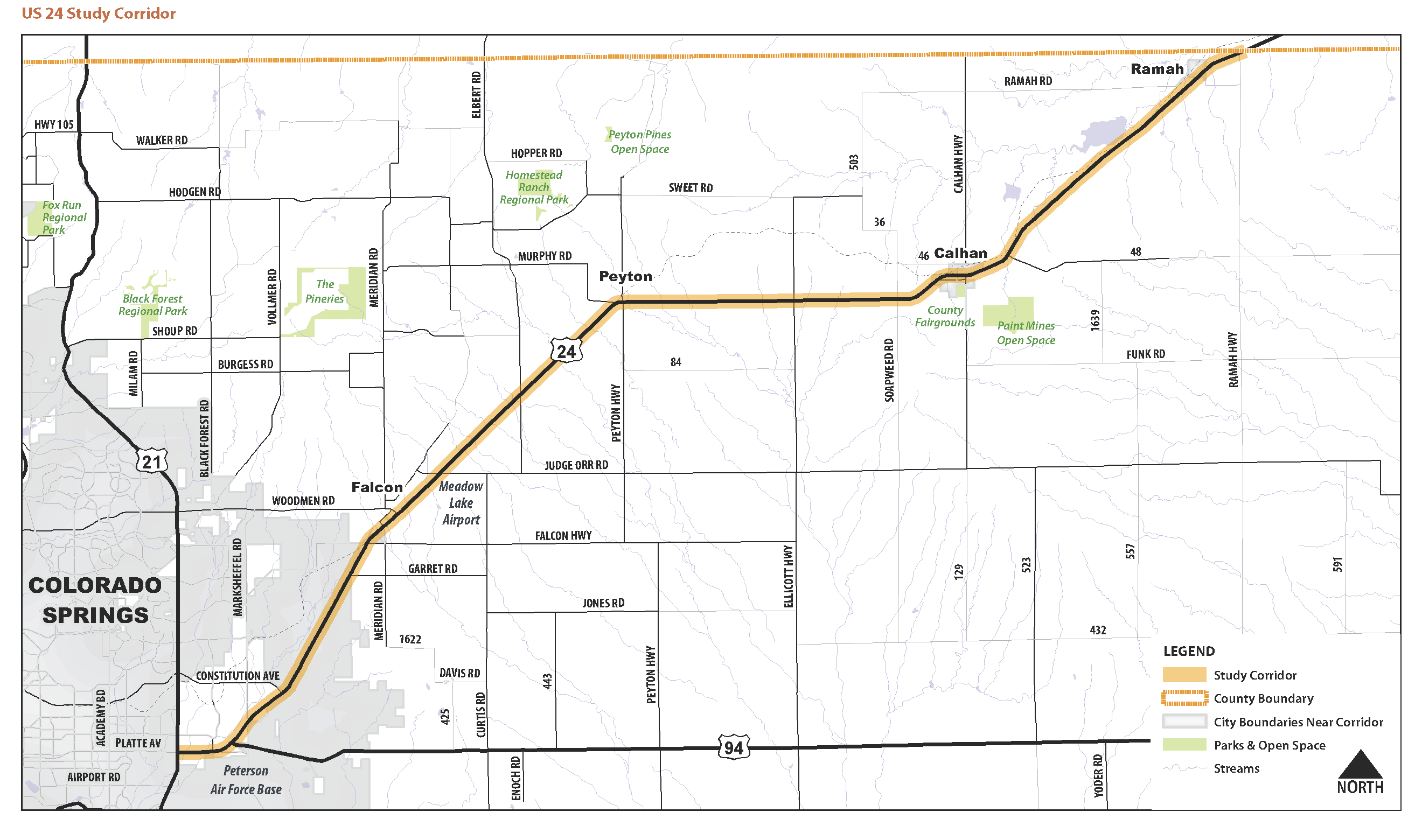US 24 Planning and Environmental Linkages (PEL) Study
Study Area
From April 2016 through March 2018, CDOT conducted a Planning and Environmental Linkages (PEL) study to examine conditions and anticipated problem areas along the US 24 corridor in El Paso County, between Powers Boulevard (CO 21) and the Town of Ramah. This study allowed to develop and screen a reasonable range of potential transportation improvements to:
- Reduce congestion;
- Improve operational performance; and
- Enhance safety.
The 40-mile US 24 study corridor varies in character and use. Near Colorado Springs, US 24 is a congested suburban corridor supporting regional commuter traffic and local businesses. To the northeast, the highway becomes more rural in nature while also serving as the main thoroughfare for local communities—as well as a valuable regional connection between I-25 and I-70.
With increased development planned to continue in north-central El Paso County, the need for planned and phased capacity, safety, and operational improvements will be increasingly critical over the next 10 years.
CDOT undertook this study to develop a more thorough understanding of the corridor, with the intent of defining a vision for the future of the corridor.
Study Outcomes
- Identified socioeconomic, environmental, and resource concerns and opportunities in the corridor.
- Screened a reasonable range of potential improvements to develop a plan of implementation for projects to meet the operational, safety, and capacity needs of the corridor.
- Identified issues and developed transportation solutions via a close partnership between CDOT, and local communities and regional agencies, as well as members of the public.
- Identified the transportation vision for the US 24 corridor.
- Completed the study in accordance with the CDOT Planning and Environmental Linkages (PEL) process, including:
- public outreach;
- direct involvement with local governments, community groups, and stakeholders within the corridor area;
- coordination with state and federal resource agencies;
- documentation of study process, findings, and recommendations to National Environmental Policy Act (NEPA) standards, so information can be utilized or referenced in a future NEPA document; and
- PEL documentation for FHWA concurrence.
- Identified existing and potential future issues along the US 24 corridor.
- Developed and analyzed a range of alternatives to meet the corridor vision.
- Established a priority list for planned short- and long-term transportation improvement projects.
- Estimated the conceptual cost of recommended transportation improvements.
The PEL Process
This transportation study was conducted using the PEL process, a study approach used to identify transportation issues and environmental concerns. This approach can be applied to make planning decisions and for planning analysis. PEL studies link planning to environmental issues, and result in valuable information that may ultimately be used to prepare a NEPA study and final design.

